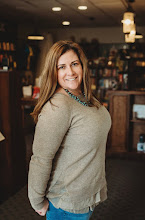Read Aloud, I cannot
imagine a day of teaching without it. On a daily basis I am reading picture
books, excerpts from chapter books, guided reading books, current event
articles, and our class read aloud book (Currently Sixty-Eight Rooms by
Marianne Malone), to my fifth graders. Two years ago my building switched from
self-contained classrooms to semi-departmentalization at fourth and fifth. My
biggest frustration? It cut into my read aloud time.
As I’ve written on this
blog before, I realized the power of a read aloud when I was in second grade.
(1982 if you’d like to know the year). My first grade teacher, Miss Jan Tuck
(or Miss Stretchberry to me) asked me to read aloud to her first grade class. I
read Monster at the End of This Book to them and felt magic as I read. I
have enjoyed reading to my students but also my children. I think the power of
a read aloud is palpable.
 |
| My student teacher, Jackie, reading aloud to the class. |
I know many teachers
question reading aloud after students read a certain age. Just as I still find
it important at my home even though my boys can read to themselves, I think
read aloud is critical in the older classes at school as well. In my reading
classes I read aloud Extra Yarn two weeks ago. I wish I had been able to
put a camera on my shoulder to capture the faces of fifth graders as this
picture book unfolded in front of them. There were so many magical moments.
When they saw Klassen’s “Bear and Rabbit” I had fingers pointed at me,
screaming out, “I want my hat back!” When the archduke hired the robbers, there
were gasps. When the text said he opened the box, before I turned the page I
heard kids whispering predictions to each other. It was amazing. Picture books,
fifth graders, a wonderful combination.
When should real aloud
stop? In my experience, never. At the elementary grades it should be occurring
daily. But even when I was in high school, I remember being read to. Ms. Flock,
one of my high school English teachers read to us. I remember her reading part
of A Separate Peace as I held my breath. Mrs. Lindsay, another high school
English teacher, read Shakespeare to us. I clearly recall her telling us that Shakespeare
was meant to be read aloud. I didn’t understand it when I’d read it at home,
but she’d read to us, her green eyes flashing, and I was mesmerized. Mr. Engle,
my high school Social Studies teacher, would read current events from the newspaper.
Barb Dress, my methods teacher in graduate school, would read aloud from
children’s literature at the end of every single class. I attribute my deep
appreciate for Patricia MacLachlan’s writing to her reading the book Journey
to me over two weeks. Amazing.
I think when we read aloud
to our students we create wonderful models for them. We bring them to books
they might not pick up on their own. We create a community around text. And, we
give them role models for reading.
With this in mind,
LitWorld is celebrating their third annual World Read Aloud Day on March 7,
2012. 793 million people worldwide remain illiterate. World Read Aloud Day is a
day to celebrate the power of words. By celebrating this day in our classroom,
we show our students the importance of literacy and the power of words.
Last year I celebrated by
Skyping with several authors (Kate Messner, Riley Carney, Laurel Snyder, and
with Shannon Miller’s classroom). My students loved it and I couldn’t wait to
participate again.
This year I am challenging
my district to see how many teachers Kindergarten – twelve can incorporate read
aloud into their day. I am asking them to email me how many students they read
to, and when, so we can see our reach in a tiny, rural district. I am asking my
mom to be a guest reader in my classroom. And while it is, unfortunately,
during state testing week, I will find pockets of time to read aloud throughout
the day.
Will you join us? You can
find more information at LitWorld’s website. Feel free to ask questions in the
comments. Let’s join together to show the world that reading and writing
belongs to us all and brings us together.
To close, let me share a
favorite quote by C. Alexander London.
It’s a fact: people can survive without books. People can even have
wonderful, full lives without books. But they can’t long endure without
community, and community is built on stories.
My classroom community is built around the stories
I read. It is how I share my love of reading with my students and how we begin
to speak the language of readers. I hope you will join us on March 7th.
Spread the word.
















